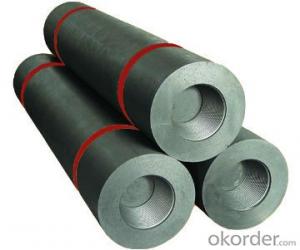When we talk about the unsung heroes of the industrial world, graphite electrodes surely deserve a spot on the list. These cylindrical wonders, with a diameter of 600mm, are the backbone of many large-scale applications. They might not be the most glamorous part of the industry, but their importance cannot be overstated. Imagine a world without them; the production lines would come to a screeching halt, and we’d be left scratching our heads, wondering how we ever managed before.
Graphite electrodes are the silent workhorses of the metallurgical and foundry industries. They play a crucial role in electric arc furnaces (EAFs) and ladle furnaces, where they help melt the raw materials to create the metal alloys we rely on for countless applications. Their ability to conduct electricity and heat, along with their chemical stability, makes them perfect for these high-temperature environments.
But what makes 600mm graphite electrodes stand out from the rest? It’s their size, of course! The larger diameter allows for a greater surface area, which in turn enables more efficient heat transfer and electrical conductivity. This means that industries can melt larger quantities of materials in a shorter amount of time, boosting productivity and efficiency.
Now, let’s dive into the world of 600mm graphite electrodes and explore their large-scale applications. We’ll start with the steel industry, where these electrodes are in high demand. The process of making steel is both an art and a science, and graphite electrodes are a vital component in the electric arc furnaces that transform raw materials into high-quality steel.
In the non-ferrous metals sector, 600mm graphite electrodes are also making waves. They are used in the production of aluminum, copper, and other metals, where their ability to withstand extreme temperatures and maintain their structural integrity is paramount. The demand for these electrodes is growing as the global economy expands and the need for non-ferrous metals increases.
Another interesting application of 600mm graphite electrodes is in the production of synthetic diamonds. Yes, you read that right! These electrodes are used in a process called High Pressure High Temperature (HPHT) synthesis, where they recreate the intense pressure and heat conditions found deep within the Earth’s crust. The result is the creation of lab-grown diamonds that are virtually indistinguishable from their natural counterparts.
The environmental impact of using graphite electrodes is also worth discussing. As the world moves towards more sustainable practices, the role of graphite electrodes in electric arc furnaces becomes even more significant. These furnaces are more energy-efficient and produce fewer emissions compared to traditional blast furnaces, making them a greener choice for metal production.
However, the production of graphite electrodes is not without its challenges. The raw material, needle coke, is a byproduct of the oil refining process and can be subject to supply fluctuations and price volatility. This can affect the cost and availability of graphite electrodes, which in turn impacts the industries that rely on them.
Despite these challenges, the future looks bright for 600mm graphite electrodes. As industries continue to innovate and find new ways to utilize these versatile components, their applications will only expand. From the steel mills to the lab-grown diamond factories, these electrodes are proving to be indispensable in the modern industrial landscape.
In conclusion, 600mm graphite electrodes may not be the most eye-catching part of the industrial world, but their impact is undeniable. They are the unsung heroes that keep the wheels of production turning and enable the creation of the materials that form the foundation of our society. So, the next time you see a steel beam or a piece of jewelry, remember the humble graphite electrode that played a role in its creation.

